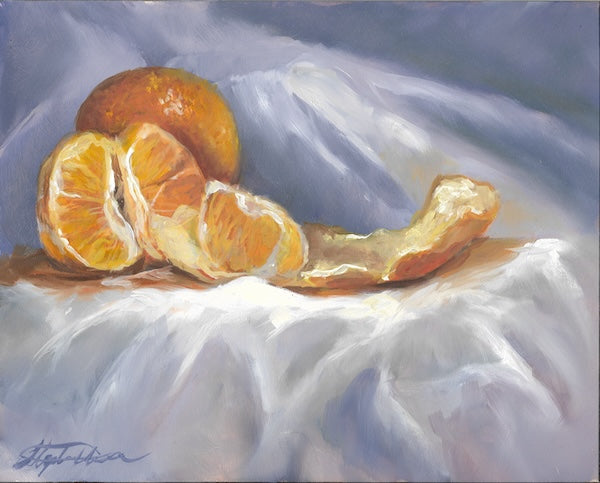Discover Breathtaking One-of-a-kind Oil Paintings for Sale Online
Discover Breathtaking One-of-a-kind Oil Paintings for Sale Online
Blog Article
Exploring Everything About Oil Paints: A Guide to Comprehending Their Charm and Value
Oil paints have captivated target markets for centuries, using a glimpse into the artistic proficiency of numerous periods. Their rich history is linked with ingenious methods and profound psychological expression. Recognizing the materials and techniques behind these art work can enhance recognition. Additionally, the marketplace for oil paints offers chances for capitalists and enthusiasts alike. As one discovers this interesting world, the inquiry occurs: what makes an oil paint truly important?
The History of Oil Paint: A Journey Through Time
Oil painting has origins that date back to old times, it absolutely grew throughout the Renaissance, when musicians discovered its adaptability and abundant shade possibility. Early examples can be mapped to the 7th century, with strategies progressing significantly across societies. The tool came to be prominent in Northern Europe in the 15th century, especially via the works of artists like Jan van Eyck, that originated its use for detailed realism and lively hues. This period noted a departure from tempera paints, enabling better deepness and texture. As oil painting spread, it affected countless musicians, causing work of arts by popular figures such as Leonardo da Vinci and Rembrandt. The medium's tradition continues, forming the art world well right into modern-day times.
Recognizing Oil Repaints: Materials and Techniques
As musicians check out the world of oil paints, they experience a varied selection of materials and strategies that define this medium. The key components of oil paint consist of pigments, which give shade, and drying out oils, such as linseed, that bind the pigments and facilitate application. Various ingredients can modify the paint's structure and drying time, boosting flexibility. Techniques like glazing, where transparent layers are constructed up, and impasto, which involves applying thick paint, permit different aesthetic effects. Additionally, the use of brushes, palette knives, and even fingers can develop one-of-a-kind appearances and surfaces. Comprehending these products and methods enables musicians to fully share their imagination and accomplish the preferred impact in their artwork.
The Role of Shade in Oil Paintings
Shade plays a critical duty in oil paints, affecting both aesthetic appeal and emotional resonance. Recognizing shade concept basics, consisting of the partnerships between hues, can boost a musician's capability to share state of mind and ambience. Furthermore, mastering color blending methods allows for better deepness and richness in a paint's palette.

Shade Theory Basics
Recognizing shade theory is essential for musicians functioning with oil paints, as it creates the structure for developing harmonious and visually engaging structures. Color theory encompasses the research of just how shades communicate, the color wheel, and the connections between primary, secondary, and tertiary colors. Artists use corresponding shades to improve contrasts and create centerpieces, while comparable shades advertise unity and cohesiveness within an item. In addition, the principles of cool and cozy shades influence the assumption of depth and area in a painting. Grasping these concepts permits artists to control shade effectively, leading the audience's eye and communicating their designated message. Mastery of shade concept ultimately enhances an artist's capability to convey emotions and concepts through their work.
Psychological Influence of Color
The emotional effect of shade in oil paints plays an important duty in how audiences connect and view with art work. Shades evoke certain sensations and state of minds, affecting the customer's emotion. Warm shades like reds and oranges can create a sense of warmth and energy, while cool tones such as blues and environment-friendlies typically stimulate calmness or self-contemplation. Artists strategically choose shade schemes to boost narrative aspects, assisting the target market's emotional journey. The saturation and contrast of colors even more enhance these effects, drawing focus and developing focus. Inevitably, the interaction of colors in oil paintings not only boosts their visual charm however also works as an effective tool for emotional expression, improving the viewer's experience and interpretation.
Shade Combining Techniques
While numerous elements of oil painting add to the overall composition, mastering color mixing strategies is important for accomplishing desired effects and deepness. Shade mixing can be approached through various approaches, including the additive and subtractive procedures. Additive mixing entails integrating shades of light, while subtractive mixing depends on pigments, where colors mix to produce new shades. Artists frequently utilize a minimal scheme to develop unified works, comprehending the relationships in between main, additional, and tertiary colors. Techniques such as glazing and scumbling additionally enhance deepness and luminosity. By masterfully mixing colors, a musician can stimulate feelings, create focal factors, and attain a sense of realistic look, inevitably elevating the paint's psychological and visual effect.
Famous Oil Painters and Their Iconic Works

Renowned for their proficiency of color and technique, oil painters have created a few of the most popular art work in background. Prominent musicians like Vincent van Gogh captivated audiences with his emotive brushwork in "Starry Night," while Claude Monet's "Impression, Sunrise" prepared for Impressionism. Leonardo da Vinci's "Mona Lisa" remains an enduring symbol of artistic genius, showcasing his skill in catching human expression. Rembrandt's "The Evening Watch" highlights his innovative use of light and shadow. Various other significant numbers consist of Pablo Picasso, that revolutionized modern-day art with his vibrant trial and error in jobs like "Les Demoiselles d'Avignon," and Georgia O'Keeffe, whose vivid representations of landscapes and blossoms assisted define American innovation. Each musician's one-of-a-kind design added significantly to the oil painting landscape.
How to Assess the Quality of an Oil Painting
Assessing the quality of an oil painting entails a mindful analysis of workmanship methods, in addition to an analysis of shade and structure. Observing brushwork, layering, and the application of paint can reveal the musician's skill degree. Furthermore, the interaction of colors and the overall plan of elements more info add considerably to the paint's visual value.
Evaluating Craftsmanship Strategies
A thorough evaluation of workmanship methods is necessary for determining the high quality of an oil painting. Critics should initially take a look at the application of paint; thick, textured brushstrokes might recommend a skilled hand, while overly uniform applications could suggest a lack of depth. oil paintings for sale. The layering technique is additionally important; the visibility of glazes and varied density can enhance brightness and intricacy. Additionally, the top quality of the products made use of, such as the canvas and pigments, plays a substantial role in durability and total aesthetic. Interest to detail in components like edges and shifts in between colors reflects the musician's dedication to their craft. Eventually, these techniques add to the painting's psychological impact and market price, functioning as signs of the musician's skill and intent
Assessing Color and Make-up
While assessing the top quality of an oil painting, one have to concentrate on the interaction of color and structure, as these elements are essential to the artwork's general effect. Shade selections can develop and stimulate feelings mood; for that reason, the musician's palette must be taken a look at for harmony and contrast. A healthy structure routes the audience's eye and develops a feeling of unity. Artists typically use techniques like the guideline of thirds or leading lines to improve visual rate of interest. Additionally, making use of light and darkness can add depth, improving the three-dimensionality of the painting. Inevitably, a successful oil painting weds shade and make-up, engaging the customer and inviting a deeper recognition of the musician's vision and method.
Caring for and Preserving Oil Paintings
Proper treatment and conservation of oil paintings is crucial for keeping their integrity and long life. To shield these art work, it is important to display them far from direct sunlight, which can create fading and discoloration. Maintaining a secure environment with regulated temperature level and humidity more help in stopping damage. Cleansing ought to be done gently making use of a soft, completely dry towel, staying clear of any kind of harsh chemicals that could damage the paint or varnish. Regular inspections for indications of wear and tear, such as splitting or flaking, are advisable. When transferring or saving oil paintings, correct cushioning and framework are necessary to stay clear of physical harm. Eventually, diligent treatment adds to the visual allure and value of oil paintings in time.
The Market for Oil Paints: Investing and accumulating
Comprehending the market characteristics for oil paintings is important for investors and enthusiasts alike. The value of these art work is influenced by numerous aspects, consisting of the musician's credibility, historic importance, and existing patterns. Enthusiasts commonly seek pieces that reverberate personally while taking into consideration prospective gratitude in worth. Galleries and public auctions work as primary venues for purchasing and marketing, with rates fluctuating based on demand and rarity. Purchasing oil paintings requires research study right into the marketplace, in addition to an understanding of credibility and provenance. Furthermore, emerging artists may supply possibilities for substantial returns, while developed names can command high prices. Overall, a calculated technique to accumulating can generate both visual satisfaction and economic incentives.

Often Asked Inquiries
What Are the Environmental Influences of Oil Painting Products?
The environmental effects of oil paint materials consist of the release of unpredictable organic substances (VOCs), dangerous waste generation, and resource removal for pigments. These factors add to pollution and eco-friendly degradation, elevating problems among environmentally conscious artists and consumers.
How Do Different Canvases Affect Oil Paint Outcomes?
Various canvases affect oil paint results substantially. Appearance, absorbency, and surface area top quality can modify paint application, drying out times, and shade vibrancy. Musicians commonly select certain canvases to accomplish preferred impacts and enhance their artistic expression.
Can Oil Paintings Be Recovered if Harmed?
If damaged, Oil paints can without a doubt be recovered. Expert conservators use different techniques to fix rips, tidy surface areas, and address discoloration, making sure that the artwork preserves its original appeal and value for future generations.
What Are the Signs of an Initial Oil Paint?
The indications of an initial oil painting consist of visible brush strokes, structure variants, and an irregular canvas weave (oil paintings for sale). Furthermore, credibility may be verified through provenance, trademarks, and the presence of a varnish layer one-of-a-kind to oil mediums
How Has Modern Technology Influenced Modern Oil Paint Techniques?
Modern technology has actually significantly influenced modern oil painting methods by presenting electronic devices for planning, enhanced products for appearance and longevity, and online platforms for offering and sharing art, thus broadening artists' imaginative possibilities and audience get to. Oil painting has origins that date back to ancient times, it truly grew during the Renaissance, when musicians discovered its versatility and abundant color capacity. The psychological influence of color in oil paints plays a crucial role in just how customers link and view with art work. While many elements of oil painting add to the general make-up, grasping shade mixing techniques is crucial for attaining wanted impacts and deepness. Reviewing the quality of an oil painting includes a cautious assessment of craftsmanship methods, as well as an analysis of color and make-up. While reviewing the quality of an oil paint, one need to focus on the interplay of color and make-up, as these components are essential to the art work's total effect.
Report this page